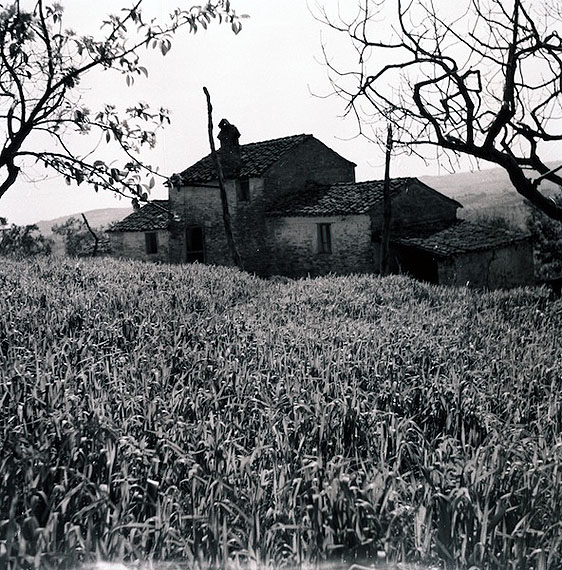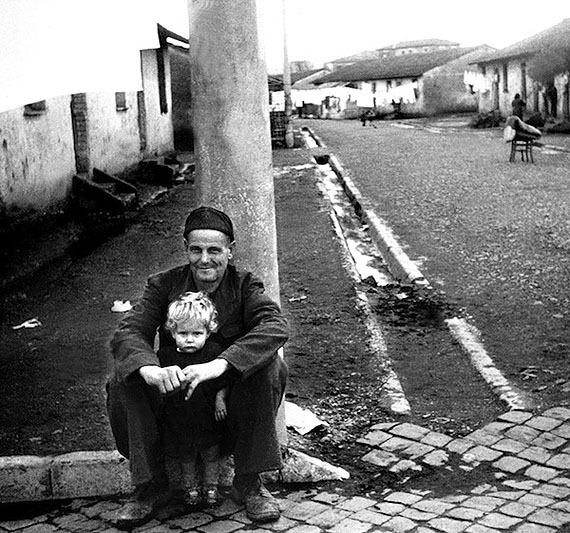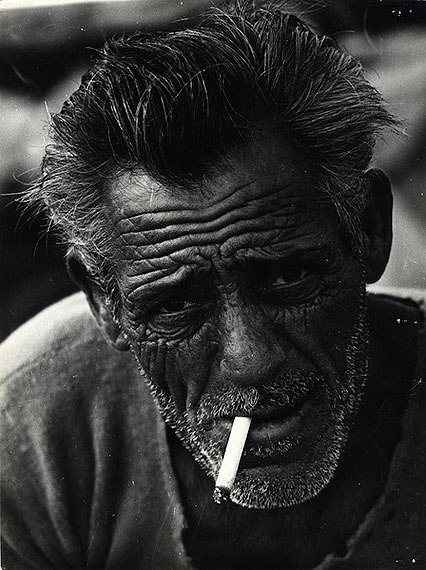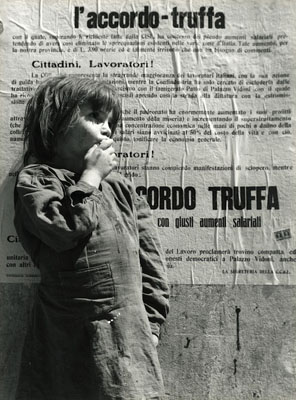
PHOTOGRAPHY AND NEOREALISM IN ITALY, 1945-1965
Aldo Beltrame » Gianni Berengo Gardin » Carlo Bevilacqua » Giuliano Borghesan » Gianni Borghesan » Giuseppe Bruno » Luigi Crocenzi » Toni Del Tin » Luciano Ferri » Mario Giacomelli » Alberto Lattuada » Nino Migliori » Alessandro Novaro » Fulvio Roiter » Italo Zannier » & others
Exhibition: 13 Oct – 20 Nov 2011
State Museum and Exhibition Centre for Photography ROSPHOTO
35 Bolshaya Morskaya
191186 Saint-Petersburg
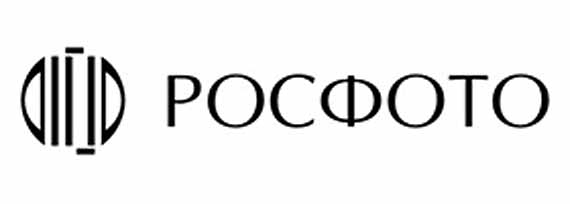
The State Russian Museum and Exhibition Centre ROSPHOTO
ul. Bolshaya Morskaya, 35
191186 Saint-Petersburg
+7-812-3141214
office@rosphoto.org
www.rosphoto.org
daily 11-19, Tue, Thu 11-21
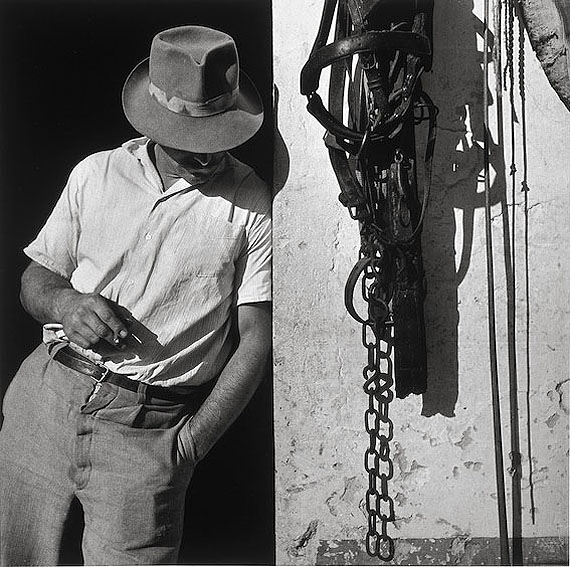
Centre for Research and Archivation of Photography (CRAF)
Italian Cultural Institute in St.-Petersburg
Ministry for Culture of the Russian Federation
PHOTOGRAPHY AND NEOREALISM IN ITALY, 1945–1965
13 October - 20 November 2011
Opening: 12 October 2011 at 18.00
(Front building exhibition hall, 2 floor)
State Museum and Exhibition Centre for Photography ROSPHOTO and Centre for Research and Archivation of Photography (CRAF), under the auspices of the Italian Cultural Institute in St.-Petersburg, introduce the exhibition Photography and Neorealism in Italy, 1945-1965. The exhibition is part of the official program of the Year of Italian Language and Culture in Russia.
Neorealism is the Italian style in art that initially emerged in literature and cinema, to spread further to art photography in just several years.
On 31 October 1939, the new issue of Corrente magazine featured a review of Walker Evans's book American Photographs. The article said: «In the works of Evans America is shown to us innocent and natural, not infected by the influence of decadent Europe» (Giulia Veronesi).
Evans's work at first had little impact on the Italian photographers of that time, excluding Alberto Lattuada. It was not until writer Elio Vittorini selected a large number of Evan's photographs for Americana anthology of literature. This book became an important event for Italy, proclaiming a new concept of literature presenting landscape as modest, mundane, yet dramatic background for the reflection of the essence of the world. The texts in the anthology were accompanied by the photographs from the collection of the Library of Congress, shots published in Look and Life magazines, made by Mathew Brady and other photographers belonging to the «Conquest of the West» epoche, as well as works by Walker Evans, Edward Weston, Margaret Bourke-White, Lewis Hine.
Alberto Lattuada (Milano, 1914 – Roma, 2005) was one of the predecessors of Neorealism. In 1941 Corrente publishing house issued his book of photographs Occhio quadrato. His works pictured empty streets, vulgar shop windows, dilapidating buildings, tin barracks, marketplace scenes, shabby interiors.
The emergence of Neorealist cinema is commonly associated with Luchino Visconti's film Obsession (Ossessione, 1942). Just several kilometres away from Visconti's shooting location, Michelangelo Antonioni was filming his People of Po River (Gente del Po). Later, in 1945, the audience saw Roberto Rosselini's Rome, Open City (Roma citta aperta), later considered the visual manifesto of Neorealism. In 1946, Rosselini's film was shown at the Cannes festival, and that is when Italian cinema gained its incredible popularity. It was also when the term «Neorealist school» was born.
In the same year, Luigi Crocenzi (Fermo, 1923–1984) published his earliest photo-stories in Il Politecnico magazine directed by Elio Vittorini: Eternal Italy (Italia senza tempo) and View of Milano (Occhio su Milano).
Crocenzi is the pioneer of the movement in Italian photography, closely connected with Neorealist cinema. Photo-story, «motionless film on a printed page», is the usual form for Crocenzi's work. The idea of photo-story was further developed in the magazines Sogno and Bolero.
In 1951 Pattruglia magazine published Crocenzi's photo-story The Lanes of My Quarter (Nei vicoli del mio quartiere) that he worked on together with poet Nanni Selva: «Come to the lanes of my quarter. These dark arteries filled with pain collect poverty every day. What do you want to know about us? We shake each other's hands, our ragged clothes looking like flags, we speak to each other with no fear. When someone is born, he becomes the son of the quarter, when someone passes away, we hold the sound of our hearts and voices».
The Friulian Group for New Photography (Il Gruppo Friulano per una Nuova Fotografia – GFNF), founded on December 1, 1955, included brothers Gianni and Giuliano Borghesan, Italo Zannier, Aldo Beltrame, Carlo Bevilacqua, Toni Del Tin, Fulvio Roiter. They were later joined by Giuseppe Bruno, Nino Migliori, Luciano Ferri and Gianni Berengo Gardin, perhaps most important photographers of the second half of XX century. The members of the group intended to reflect the contemporary history of Italy in photography which they considered the form of art documentation of the world. In April 1955 Crocenzi wrote to Zannier, «…I believe that we should act in unity, our hearts are filled with love for reality, for life and the history of our people, we feel ourselves alive in our land, among the people like us» (Archivio/Crocenzi CRAF).
On 2 May 1955, Italo Zannier announced the manifesto of Neorealist photography in Teatro della Ribalta in Bologna.
The aesthetics of GFNF, usually focused on the sequence of images, as is well seen in the works by Gianni and Giuliano Borghesan, was attracted by the everyday peasant and workers' life. The world that reflected the self-comprehension of common people, earlier shown in Luigi Crocenzi's photo-works, gained its new image. Such aesthetics poetically proclaimed the «time being» and thus kept the idea of «beautiful photography».
In 1956, Crocenzi founded the Centre for the Culture of Photography (Centro per la Cultura nella Fotografia) in the town of Ferma. Many Italian photographers collaborated with the Centre.
In 1957, the first biennial of photography was held in Venice.
In 1961, Luigi Crocenzi curated the exhibition of Mario Giacomelli's (1925–2004) work Man, Woman and Love (Un Uomo Una Donna Un Amore). Giacomelli altered dramatically the Neorealist position, having enriched image with new dreamlike poetry (alike to what Federico Fellini had just started doing in cinema) and creating utmostly laconic photo-stories.
In 1963 and 1964, Crocenzi collaborated with Alvaro Valentini, Toni Nicolini and Piero Berengo Gardin on photographic scenarios for the national television RAI. The works of important poets like E.Montale, D.Leopardi, D.Ungaretti and S.Quasimodo were «staged» with the photographs by Mario Giacomelli, Ugo Mulas, Toni Nicolini, Jean Dieusaide. With texts being recited by backstage voice, the eye of TV camera was sliding across the images. This was an attempt to create dialectical relationships between the visual (fixed image) and literary text.
In 1963–1964, Crocenzi made photographic illustrations for Lanfranco Colombo's books From the East (Ex Oriente) and Five Runes (Cinque rune). In 1967 he finished working on the book of photographs Milano, that comprised texts by Leonardo Vergani and photographs by Lanfranco Colombo, Toni Nicolini, Ferdinando Scianna and Diego Birelli.
Photo-stories by Luigi Crocenzi, GFNF members' works, Mario Giacomelli's photographic narrations are the main objects of this exhibition presenting Neorealism in photography.
Walter Liva
The opening of the exhibition will be followed by the lecture of its curator Walter Liva, Neorealism and Photography in Italy.
The exhibition is accompanied by the lectures given by Elena Kashenko, Ph.D. in Art History, Associate Professor at St.-Petersburg State University.
22 October – Birth of Neorealism. Visconti, Antonioni, Rosselini.
5 November – The tragedy of the 'little man'. Vittorio de Sica's films.
19 November – Neorealism in Federico Fellini's early films.
Lectures start at 15.00.
